PREFACE
The singular region of Equatorial Africa, which it was my fortune to
be the first to explore, and of whose people and strange animal and vegetable
productions I have given some account in the following pages, is remarkable
chiefly for its fauna, which is, in many respects, not only extraordinary,
but peculiar. In this comparatively narrow belt is found that monstrous
and ferocious ape, the gorilla. Here, too, and here only, is the home of
the very remarkable nest-building ape, the Troglodytes calvus, the
nshiego
mbouve of the natives; of the hitherto unknown koo-loo-kamba,
another ape no less remarkable than the T. calvus and of the chimpanzee.
North, south, and east of this region, the lion lords it in the forests
and the desert: only in this tract he is not found. Here, too, I discovered
no less than twenty new species of quadrupeds, and upward of sixty new
species of birds, many as strange as others were beautiful.
Thus it will be seen that this region formed a peculiarly rich field
for an ardent naturalist. Game is not found in such plenty as on the vast
plains of Southern Africa; there is less butchering; but, if the larder
is not so well supplied, the half-starved explorer experiences many happy
days, when the discovery of a hitherto unknown animal rewards him for all
his toils, dangers, and sufferings.
Not only has the fauna of this region, for its limits, a very unusual
number of species peculiar to itself, but even some of those animals which
it has in common with the regions to the north and south seemed to me varieties.
Thus I am almost certain that the elephant of this region is a variety
distinct in several particulars from his South African brother.
Doubtless the peculiar formation of the country causes this exceptional
condition. Instead of the vast thinly-wooded and arid or sparsely-watered
plains of Northern, Eastern, and Southern Africa, the explorer finds here
a region very mountainous, and so densely wooded that the whole country
may be described as an impenetrable jungle, through which man pushes on
only by hewing his way with the axe. These forests, which have been resting
probably for ages in their gloomy solitude, seem unfavorable even to the
rapid increase of the beasts who are its only denizens. There are no real
herds of game; nor have the people of this region yet attained that primitive
step in the upward march of civilization, the possession of beasts of burden.
Neither horses nor cattle are known here: man is the only beast of burden.
The river system of this region seems to me extremely well adapted for
the prosecution of commercial enterprise. Until I explored them, the rivers
known to Europeans and Americans as the Nazareth, Mexias, and Femand Vaz,
were supposed to be three distinct streams; but the reader will perceive,
by reference to my map, that they are connected with each other. The Mexias
and Nazareth are only outlets of the Ogobay River, which also throws a
portion of its waters into the Femand Vaz, chiefly through the Npoulounay.
Thus these three rivers are, in fact, mouths of the Ogobay; and they form,
with the intervening lowlands (which are evidently alluvial deposits),
an extensive and very complicated network of creeks, swamps, and dense
forests, which I propose to call the delta of the Ogobay. This delta is
bounded on the north by the Nazareth, which enters the sea in lat. 0°
41' S. and long. 9° 8' E., and on the south by the Femand
Vaz, which falls into the sea in lat l° 17' S., and long. 5°
58' E. The mouth of the Mexias lies between, in lat 0° 56' S., and
long. 8° 47' E.
I have not given in the narrative any account of my exploration of this
labyrinth, because it was extremely barren of incidents interesting to
the reader. It was a most tedious undertaking, and resulted only in the
knowledge that this large tract is entirely uninhabited; that in the rainy
season, when the rivers and their divergent creeks are swollen, the whole
country is overflowed ; and that the land is covered with immense forests
of palm, there being found none of the customary mangrove swamps. Land
and water are tenanted only by wild beasts, venomous reptiles, and intolerable
swarms of musquitoes.
The entrance of the Femand Vaz, which is one of the keys to this region,
is rendered intricate by shifting sand-bars and a very crooked channel,
which, however, carries from fifteen to twenty feet of water at all times.
It, as well as the Mexias, throws a tremendous quantity of fresh water
into the ocean during the rainy season. So vast is this supply, and so
rapid the current, that, though the mouths of these streams are but half
a mile wide, the body of fresh water launched from each, during the rains,
forces its separate way through the ocean for at least four or five miles
before it becomes absorbed; and I have seen days when the tide had no effect
at all upon the vast column of water pushing seaward.
Above Monwe for about thirty miles, the Femand Vaz, which here takes
the name of Bemboj flows through a country so flat that in the rainy season
its banks are overflowed for many miles, and in parts scarce a foot of
dry land is in sight. Farther up, the country becomes hilly, and the upper
parts of the Rembo and Ovenga rivers flow between steep banks, and through
a decidedly mountainous region. But even here the magnificent mountains
are divided by plains or broad valleys, which are overflowed during the
season of rains. On the return of the dry season, these overflows leave
great quantities of decayed or decaying matter, which, though enriching
the ground, also cause fevers. But the interior fevers are not so frequent
nor so dangerous as those caused by the mixed salt and fresh water vegetation
of the seashore; and when this region becomes settled, the mountains will
afford a convenient sanitarium for white men.
Leaving the Fernand Vaz, which, though partly fed by the Ogobay, is
an independent stream, fed by its source in the Ashankola Mountains, we
come to the Ogobay, probably the largest river of equatorial Africa. The
Ogobay is formed by the junction of two considerable streams of the interior
- the Rembo Ngouya and the Rembo Okanda. The first I partly explored; of
the Rembo Okanda I know only by report of the natives, who state that it
is much larger than the Ngouyai, and that its navigation is in some places
partly obstructed by vast rocky boulders, which scattered about the hill-sides
and the higher plains of the interior, form a very remarkable and peculiar
feature of the landscape. The banks of the Ogobay, so far as I have explored
them are in many parts subject to annual overflow.
The Rembo Ngouyai is a large stream, flowing through a mountainous and
spledidly wooded coutnry, which is the most magnificent I saw in Africa.
It has numerous smaller feeders. Its navigation is unfortuneately interrupted
by the great Eugenie or Samba Nagoshi fall; but it is quite possible for
steamers to reach this all from the sea; and theupper portion, above the
fall, is navigable for the largest class of river steamers during the greater
part of the year and flows through a region the tropical magnificence of
which is quite unrivaled, and which abounds in many precious woods, while
it is also well calculated for a rich agricultural country. I could not
help longing heartily for the day to come when this glorious stream will
be alive with the spalsh of paddle-wheels, and its banks lined with trading
and missionary posts. Ebony, bar-wood, and India-rubber, palm-oil, beeswax,
and ivory are the natural products of this region, so far as my limited
opportunities allowed me to ascertain. But any tropical crop will grow
in this virgin soil; and it needs only the cunning hand and brain of the
white man to make this whole tract become a great producing country.
My little knowledge of geology, and the impossiblity of carrying heavy
specimens, prevented me from making useful observations on the geological
structure of this region; and I can only say that micaceous schist, talcose
shale, and quartz are found abundantly in the mountains, together with
conglomerates and various sandstones, while a red sandstone seems most
to abound in the Ashira country. Iron is plentiful; the ore, which is rich,
is found cropping out of the ground in many parts. Copper I did not meet
with, though it is brought by the Loando negroes from teh southern interior
to the sea-shore, where it is purchased by Europeans.
The mountain range which I explored on my last journey, and which is
laid down on the map as far as my extreme poin, or terminus, seems to me,
beyond doubt, to be part of a great chin extending nearly across the continent
without ever leaving the line of the equator more than two degrees. Not
only were the appearances such, as far as I was able to penetrate, but
all accounts of the natives and of their slaves tend to make this certain.
Some of the slaves of the Apingi are brought from a distance to the eastward
which they counted as twenty days' journey; and they invvariably protested
that the mountains in sight from their present home continue in an uninterrupted
chain far beyond their own country -- in fact, as far as they knew.
Judgin, therefore, from my own examination, and from the most careful
inquiries among people of the far interior, I think there is good reason
to believe that an important mountain range divides the continent of Africa
nearly along the line of the equator, starting on the west from the range
which runs along the coast north and south, and ending in the east, probably,
in the southern mountains of Abyssinia, or perhaps terminating abruptly
to the north of Captain Burton's Lake Tanganyika.
In the northern slope of this great range originate probably many of
the streams rising in the southern slope, it is probable that some join
their waters to the Rembo Okanda, the Rembo Ngouyai, and the Congo and
others flow south into the Zambesi, and into the great lake or chain of
lakes in the eastern part of Africa.
To this mountain range, so far as I have followed it and ascertained
its existence, I propose that the native name, Nkoomoonabouali, be given,
from the splendid peak which I discovered, and which forms the western
point of the range. I think it probable that the impenetrable forests of
this mountain range and its savage inhabitants together put a stop to the
victorious southward course of the Mohammedan conquest. South of the equator,
at any rate, these have never penetrated.
Of the eight years which I have passed in Africa, the present volume
contains the record of only the last four, 1856, '7, '8, and '9, which
alone were devoted to a systematic exploration of the interior. As a traveler,
I had the very great advantages of tolerably thorough acclimation, and
a knowledge of the languages and habits of the sea-shore tribes, which
proved of infinite service to me among the tribes of the interior, with
whom I was in every case able to hold converse, if not by word of mouth,
then by a native interpreter with whose language I was familiar.
A brief summary of the results of my four years' travel will perhaps
interest the reader. I traveled — always on foot, and unaccompanied by
other white men — about 8000 miles. I shot, stuffed, and brought home over
2000 birds, of which more than 60 are new species, and I killed upward
of 1000 quadrupeds, of which 200 were stuffed and brought home, with more
than 80 skeletons. Not less than 20 of these quadrupeds are species hitherto
unknown to science. I suffered fifty attacks of the African fever, taking,
to cure myself, over fourteen omices of quinine. Of famine, long-continued
exposures to the heavy tropical rains, and attacks of ferocious ants and
venomous flies, it is not worth while to speak.
My two most severe and trying tasks were the transportation of my numerous
specimens to the sea-shore, and the keeping of a daily journal, both of
which involved more painful care than I like even to think of.
The volume now respectfully presented to the public has been written
out from my faithfully-kept journals. I have striven only to give a very
plain account of a region which is yet virgin ground to the missionary
and the trader — those twin pioneers of civilization — and which affords
a fertile field for the operations of both.
Before closing, it is my duty as well as pleasure to acknowledge gratefully
very many kindnesses received from the offiicers and members of the Boston
Society of Natural History, whose cheerfully-given aid greatly lightened
for me the tedious task of cataloguing my large collection of specimens
of Natural History.
Also I owe especial thanks to my friend, Dr. J. Wyman, the eminent Professor
of Comparative Anatomy in Harvard University, for much valuable assistance;
to Dr. S. Kneeland, the able recording secretary of the Boston Society
of Natural History; to the Geographical and Ethnological Societies of New
York; to my publishers, Messrs. Harper & Brothers, who have borne with
kindly patience the many delays and troubles caused by my inexperience
in the labors of authorship; and, lastly, to the many friends whose kind
memories were proof against my long absence in Afirica, and whose welcome
on my return lent
additional force to my gratitude to that God who watched over and preserved
me in my wanderings.
The long and tedious labor of preparing this book for the press leaves
me wnh the conviction that it is much easier to hunt gorillas than to write
about them — to explore new countries than to describe them. In the year
which has passed since my return to the United States I have often wished
myself back in my African wilds. I can only hope that the reader will not,
when he closes the book, think this labor wasted; and with this hope I
bid him a friendly farewell.



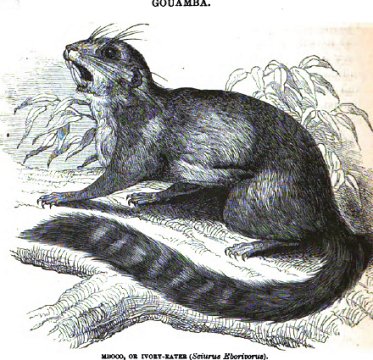
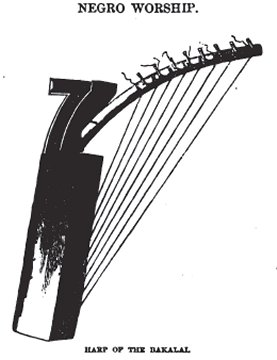
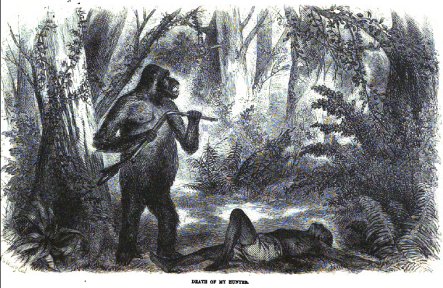
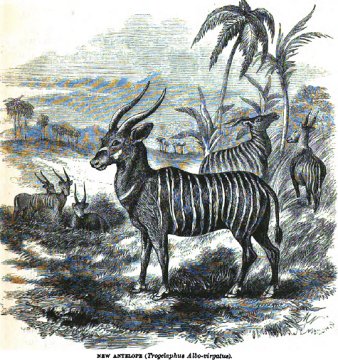
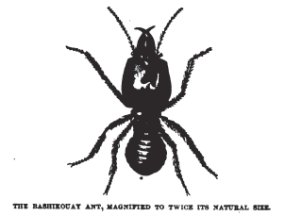

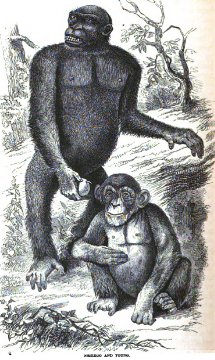
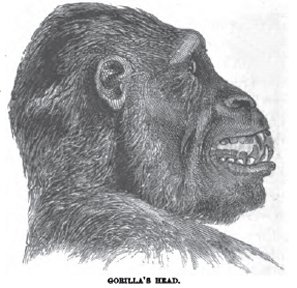
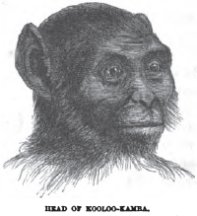
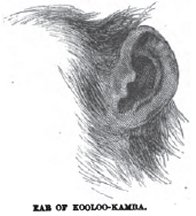
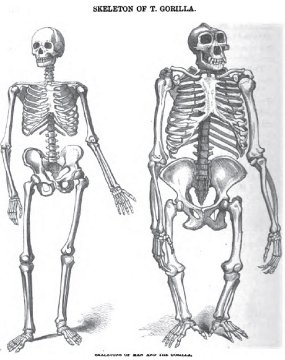
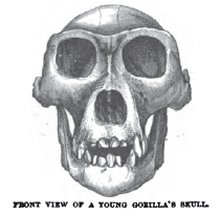

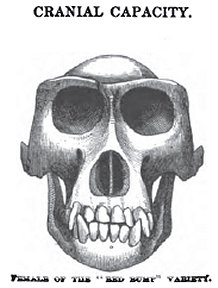
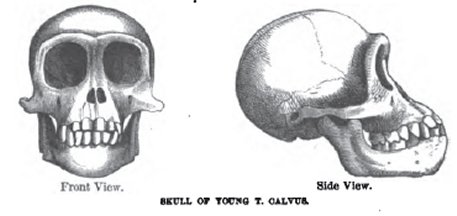
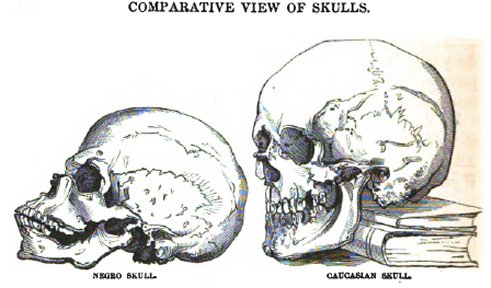
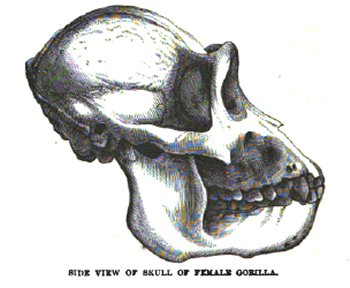
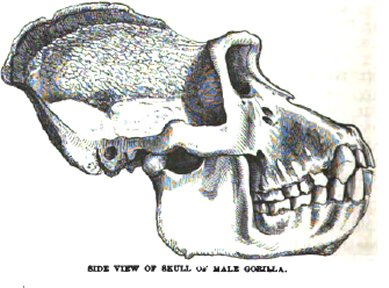
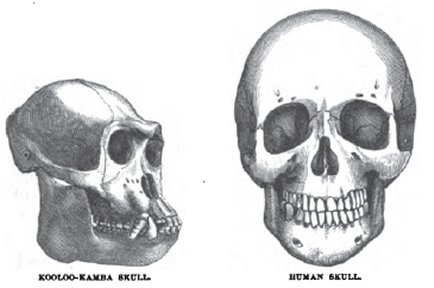

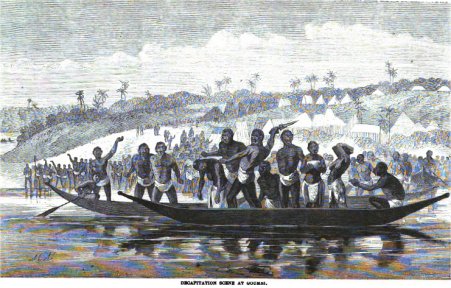
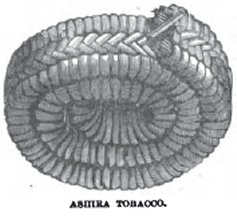
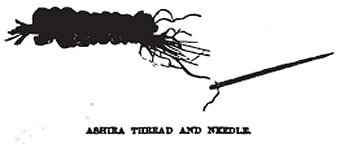
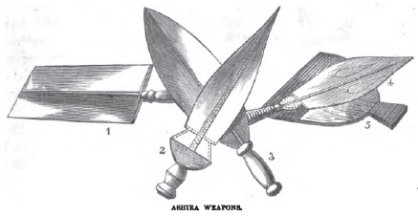
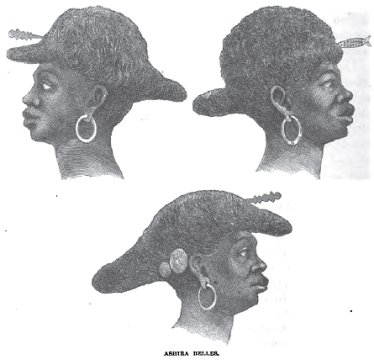
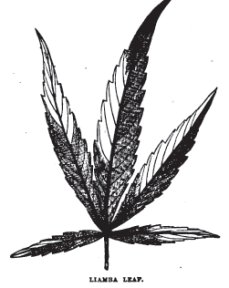
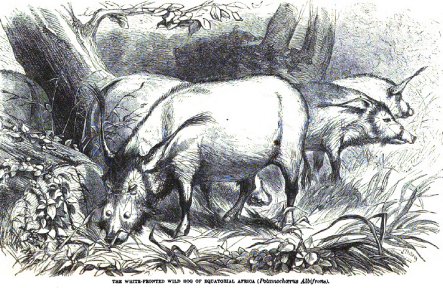
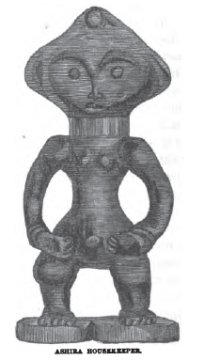
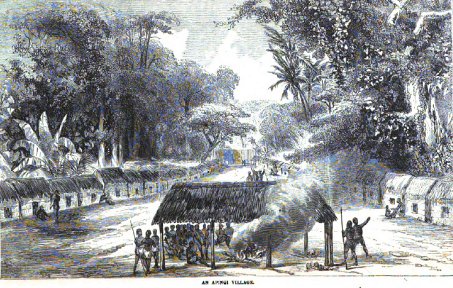
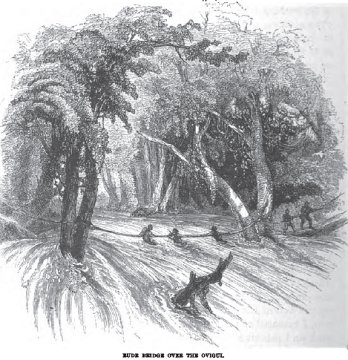
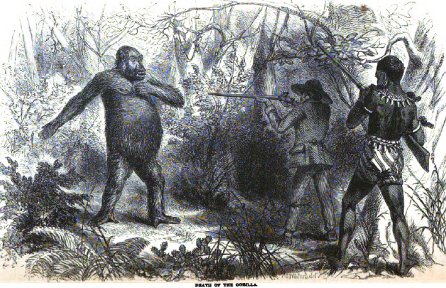
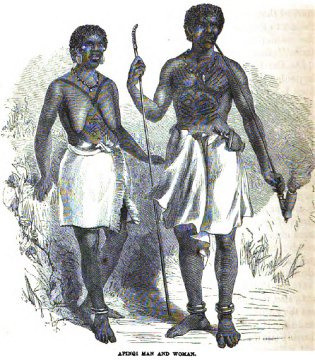
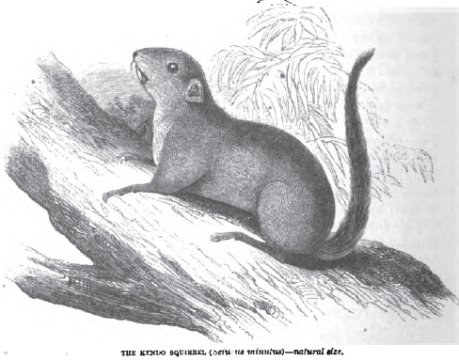
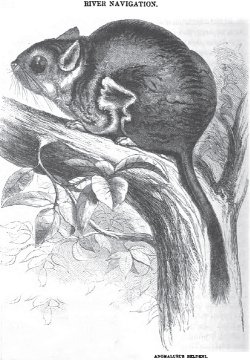
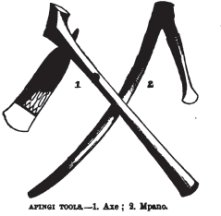
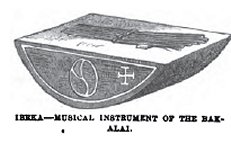
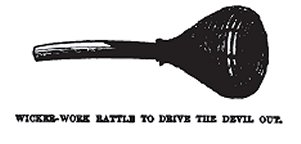
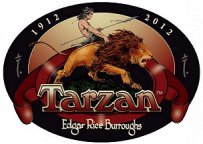
![]()

![]()